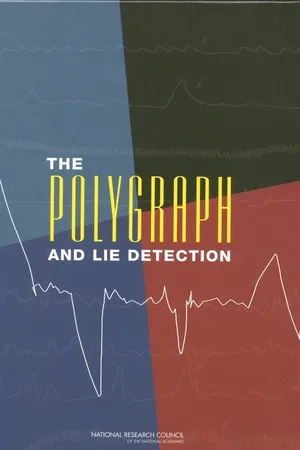About this book
The polygraph, often portrayed as a magic mind-reading machine, is still controversial among experts, who continue heated debates about its validity as a lie-detecting device. As the nation takes a fresh look at ways to enhance its security, can the polygraph be considered a useful tool?The Polygraph and Lie Detection puts the polygraph itself to the test, reviewing and analyzing data about its use in criminal investigation, employment screening, and counter-intelligence.The book looks at: The theory of how the polygraph works and evidence about how deceptiveness"e;and other psychological conditions"e;affect the physiological responses that the polygraph measures.Empirical evidence on the performance of the polygraph and the success of subjects countermeasures.The actual use of the polygraph in the arena of national security, including its role in deterring threats to security.The book addresses the difficulties of measuring polygraph accuracy, the usefulness of the technique for aiding interrogation and for deterrence, and includes potential alternatives"e;such as voice-stress analysis and brain measurement techniques.
Frequently asked questions
- Essential is ideal for learners and professionals who enjoy exploring a wide range of subjects. Access the Essential Library with 800,000+ trusted titles and best-sellers across business, personal growth, and the humanities. Includes unlimited reading time and Standard Read Aloud voice.
- Complete: Perfect for advanced learners and researchers needing full, unrestricted access. Unlock 1.4M+ books across hundreds of subjects, including academic and specialized titles. The Complete Plan also includes advanced features like Premium Read Aloud and Research Assistant.
Please note we cannot support devices running on iOS 13 and Android 7 or earlier. Learn more about using the app.
Information
Table of contents
- COVER PAGE
- THE NATIONAL ACADEMIES
- COMMITTEE TO REVIEW THE SCIENTIFIC EVIDENCE ON THE POLYGRAPH
- BOARD ON BEHAVIORAL, COGNITIVE, AND SENSORY SCIENCES
- COMMITTEE ON NATIONAL STATISTICS
- Contents
- Preface
- Executive Summary
- 1 LIE DETECTION AND THE POLYGRAPH
- 2 VALIDITY AND ITS MEASUREMENT
- 3 THE SCIENTIFIC BASIS FOR POLYGRAPH Testing
- 4 EVIDENCE FROM POLYGRAPH RESEARCH: QUALITATIVE ASSESSMENT
- 5 EVIDENCE FROM POLYGRAPH RESEARCH: QUANTITATIVE ASSESSMENT
- 6 ALTERNATIVE TECHNIQUES AND TECHNOLOGIES
- 7 USES OF POLYGRAPH TESTS
- 8 CONCLUSIONS AND RECOMMENDATIONS
- References
- Appendix A Polygraph Questioning Techniques
- Appendix B Use of Polygraph Screening in the U.S. Department of Energy and Other Federal Agencies
- Appendix C The Wen Ho Lee Case and the Polygraph
- Appendix D Physiological Processes Measured by the Polygraph
- Appendix E Historical Notes on the Modern Polygraph
- Appendix F Computerized Scoring of Polygraph Data
- Appendix G Process for Systematic Review of Polygraph Validation Studies
- Appendix H Quantitative Assessment of Polygraph Test Accuracy
- Appendix I False Positive Index Values for Polygraph Testing
- Appendix J Decision Analysis of Polygraph Security Screening
- Appendix K Combining Information Sources in Medical Diagnosis and Security Screening
- Appendix L Biographical Sketches of Committee Members and Staff
- Index
